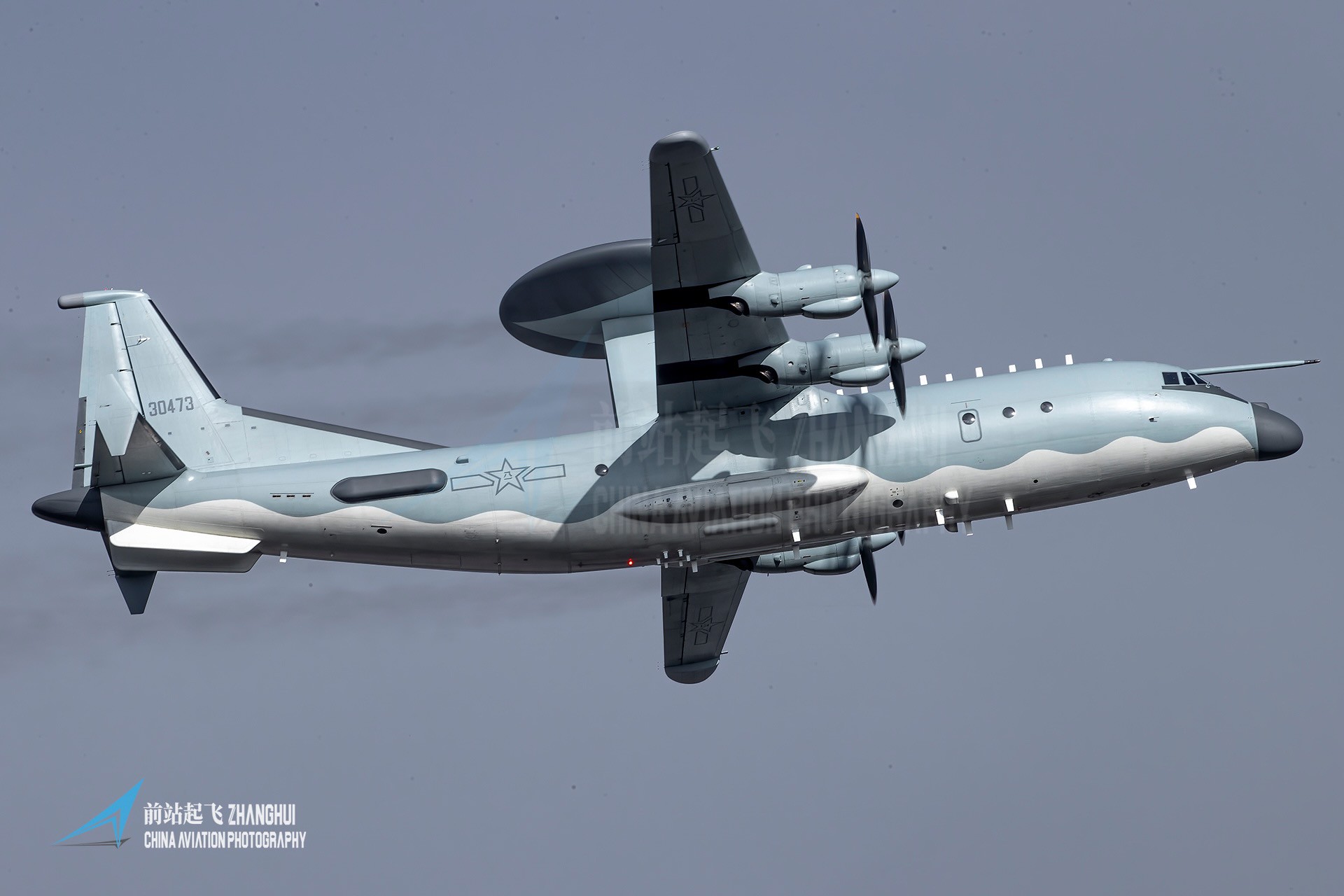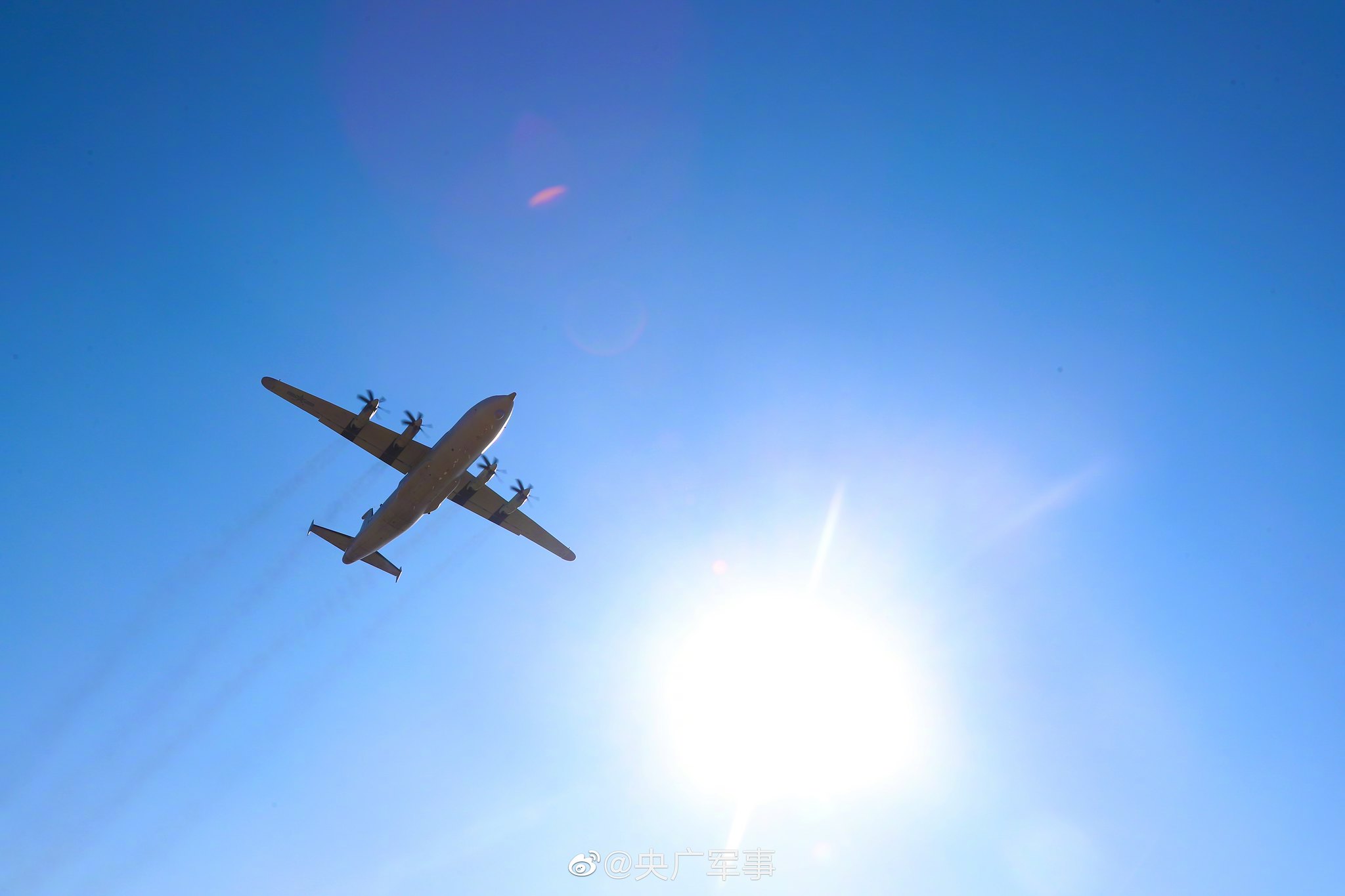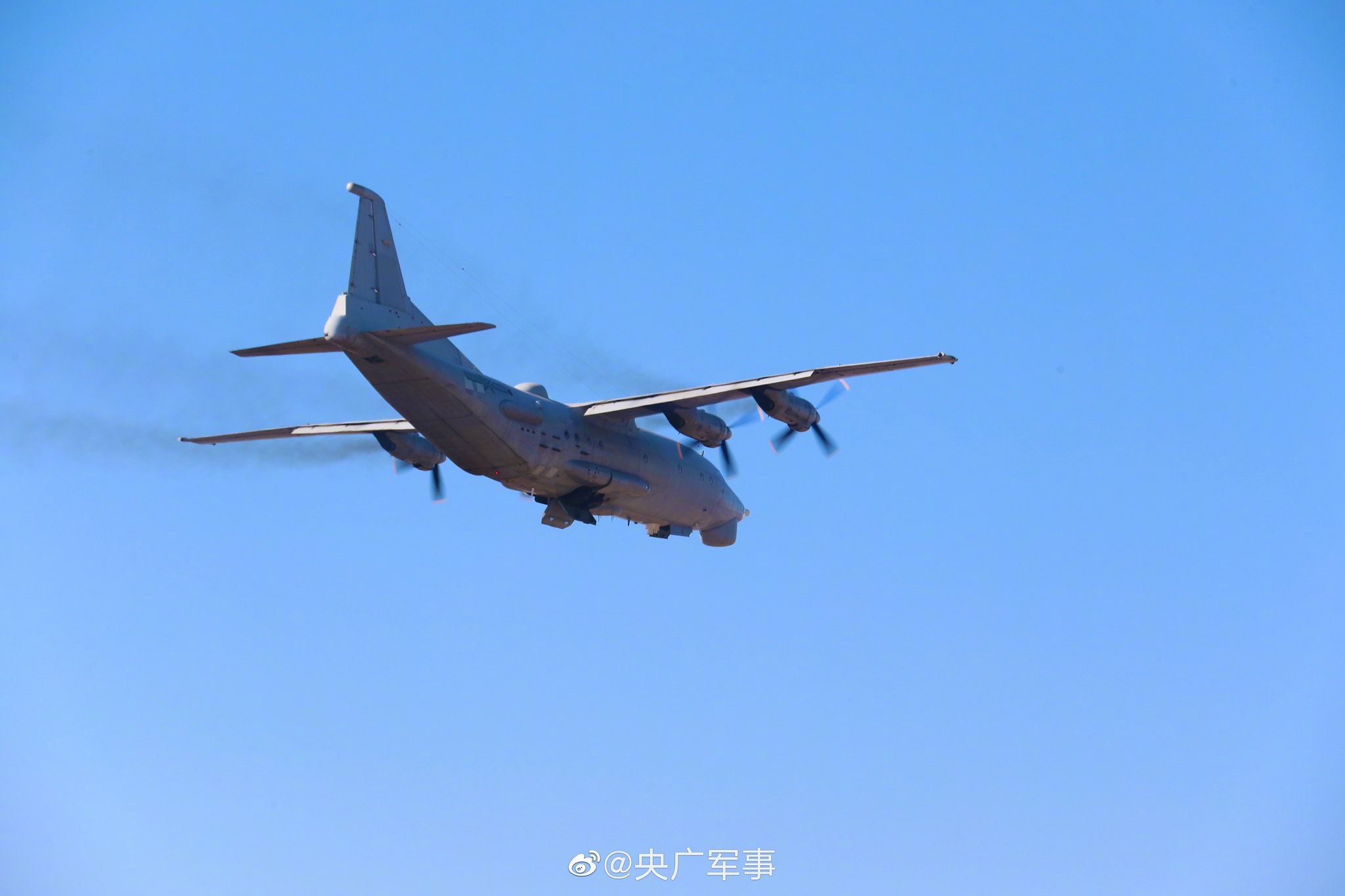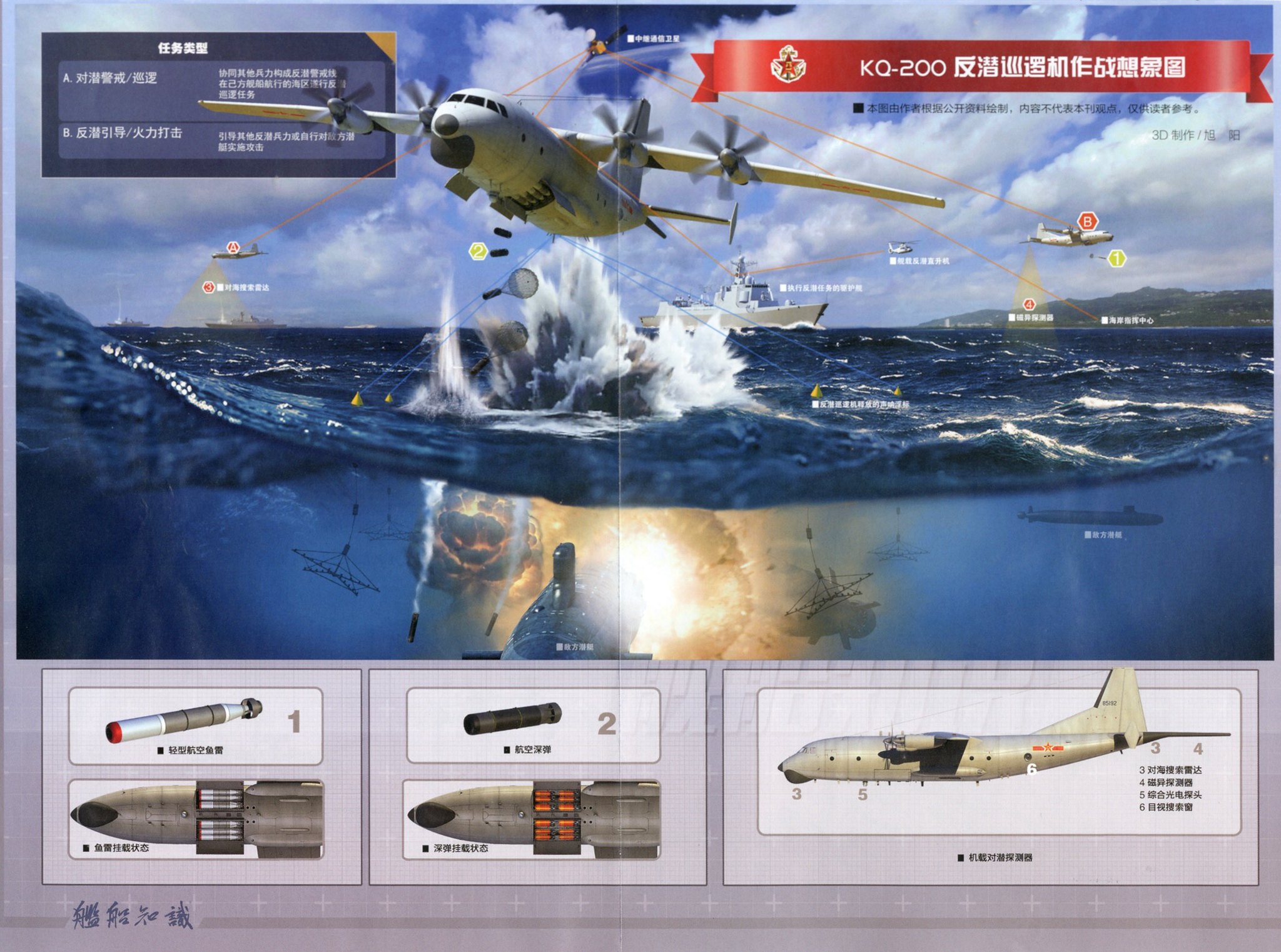I see, is there still a valid reason for using depth charges over torpedoes for ASW in the modern era?
and
The depth charges they're using have a form of guidance.
Personally I only imagine they'd be useful in niche roles, and torpedoes would be the primary more useful weapon of choice.
I think you're both going in the wrong direction with your thinking. I would speculate that it is not about using depth charges as weapons at all because this indeed doesn't make much sense. However there is another application of depth charges that makes a lot of sense once you consider the physics of sonar.
Depth charges can be used as substitute for active sonar and are often more effective because underwater explosion generates more acoustic power than active sonar.
During the Cold War this was a standard tactic for Tu-142 ASW patrol missions to first drop passive sonobuoys in a pre-determined ranging pattern and then drop depth charges. The explosion would be registered by the buoys which would transmit the data to the Bear but if there was a submarine in range then an echo would be registered as well and that combined with knowledge of the position of the sonobuoys, the position of dropped charges and times of arrival of signal allowed for detection of the submarine. Once the submarine's position was approximated an active sonobuoy would be dropped and then a torpedo.
---------
This table explains why a depth charge is more practical than active sonar:
- maksymalny dystans wykrycia sygnału - maximum distance of detection
- źródło - source
- poziom - level (of source power in dB)
- typ sonaru - sonar type
- pasywny - passive
- aktywny - active
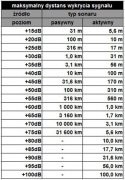
The values are calculated from the sonar equation.
DT= SL+TS+AG-RL-2PL
SL -
source level measuring active sonar power
TS -
target strength or sonar cross-section of target
AG -
array gain of active sonar receiver array
RL -
reverberation level of the environment, here: 105dB which is nominal for Atlantic
PL -
propagation loss over distance
DT -
detection threshold which for solving of equation is equal to 0
The equation is solved for PL at DT=0 and PL then is resolved using another formula to get radius (range). And that's how we get the values in the table for active sonar. Passive sonar has slightly different equation but uses the same mechanics.
Active sonar has lower detection ranges because the soundwave needs to propagate from the source (sonar) to the target (submarine) and back to the sonar. This doubles the distance and the propagation losses of the wave are proportional to square of distance so the loss is geometric. Passive sonar is therefore much more useful because of range. This is universal property of all spherical wave propagation which is why passive detection of radar works at greater ranges than radar itself.
Note that in case of sonobuoys the distances from the source to the target and from the target to the receiver are not identical like in active sonar but I'll ignore it as well as array gain and target strength - for simplicity.
Using the table, when you want a sonobuoy to detect the submarine at 10km in the middle of the Atlantic you need to have a source of 185 dB to account for 105dB reverberation level. 185dB is a lot of power for a small sonobuoy which makes it impractical. However a depth charge can easily generate it and more. Most importantly a depth charge detonation generates all spectrum of waves meaning that hydrological conditions - differences in water temperature, salinity etc - won't affect the signal as much as a single high frequency.
When you are hunting for very quiet submarines like Virginia which have averaged nominal noise level at around 105-110dB it becomes challenging even with passive sonar. Passive sonar equation is simpler:
DT= SL+AG-NL-PL
NL -
noise level of environment, typically assumed at 90dB average for open ocean but depends on the local conditions, often is higher than 100dB in areas with high marine traffic
So if you're looking for 105dB submarine with noise level of 90dB you only have 15dB and whatever array gain you have to improve detection ranges. Array gain is dependent on the size and number of hydrophones in the array which is easy to increase for large towed arrays but impossible for small passive sonobuoys. So with 15dB you're down to literally
meters for detection.
This is not an error - this is literally how difficult it is to detect quiet submarines hence the development of towed arrays for submarines and the growing size of flank arrays. Array gain can improve sonobuoy detection by 20dB like for American AN/SQQ-101 or Soviet RGB-15 but it is still just a few kilometers in a very quiet body of water. Add 5-10dB of background noise and we're back to meters. Submarines have a lot of space for more hydrophones and array gain for submarine sonars are
much greater and because the flank and towed arrays are large they can space hydrophones sufficiently so that they can provide direction and ranging with accuracy. But an MPA doesn't have such option. It builds a substitute of a passive array with sonobuoys which transmit information to the MPA and work as a distributed passive array but because they are still individual small arrays they need signal much stronger than what the submarine generates. The only solution is high power active source i.e. a depth charge forcing the signal via echo.
Using depth charges has also the additional benefit of exerting psychological pressure on the crew of the hunted sub as well as having the option of damaging it by lucky accident.
So precision-guided depth charges are most likely used as noise sources that are dropped in very precise locations to get best results from the sonobuoys as well as other sensors -seabed hydrophones, surface ASW assets towing passive arrays etc. There's absolutely no point in using them as a weapon but there is plenty of sense to use them as a precisely placed high power acoustic pressure source. And while I haven't checked what the typical payload of a modern MPA is, I don't think modern technology has resolved the issues that stem from physics of underwater sound propagation.
Hope this helps.
